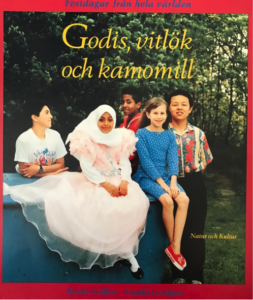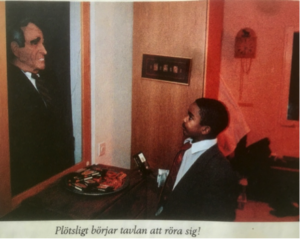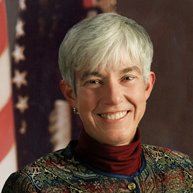by Beatrice Camp
When my husband David and I starting working at the U.S. embassy in Stockholm in 1989, formerly homogeneous Sweden was beginning to grapple with an increasingly diverse population. I was surprised that the international school included a large number of students from Yugoslavia, and then equally surprised how they melded into the local community as their home country broke up.

Faced with growing immigrant issues, the Swedish government generated programs to help foreigners assimilate; David and I spent one weekend brushing up our Swedish language skills with Iraqi Kurds in a government-run language camp. Little did we imagine that we would later be supporting Swedish diversity training by introducing the exotic American holiday of Halloween to schoolchildren.
As U.S. embassy spokesperson, I was regularly on the receiving end of a wide range of inquiries. One day while I was out of the office, a journalist called asking to talk to an American about Halloween. In my absence, one of our local employees thought to transfer the reporter to my husband. David obligingly regaled the reporter with stories of Halloween pranks from his childhood, including one involving a mean old man, his prized Cadillac, a cat, and Ex-Lax. His account made the front page of Svenska Dagbladet the next day; fortunately, no one in the embassy seemed overly disturbed by this unauthorized messaging.

Having thus become the face of American Halloween, we were approached by the Ministry of Education for a project aimed at getting more diverse stories in educational materials. The Swedish school system had decided to produce a booklet about holidays around the world, with each month representing a celebration from a different country. Halloween was chosen for October. To write the chapter, the book producers spent Halloween with us, carefully observing the limited trick or treating available to embassy kids and their friends.
For that year’s decorations, we put a table across an interior doorway at our house with an empty picture frame covering the top half. David stood behind the frame in the dark, wearing a George H.W. Bush mask I had bought for the 1992 election events at the embassy. My role was to invite the kids over to the candy bowl on the table; as they reached for the candy, Bush would lunge out of the picture and grab their hands. The kids were screaming. It was pretty effective.
When the writer put together the chapter about Halloween, she noted that it is a time when American parents like to dress up as politicians to scare the children. And so it went to print, along with some drawings by our son and pictures of our traditional festivities. Once the book was completed, Swedish schoolchildren could learn about celebrations of Carnival, Loy Kratong, Chanuka — and Halloween.
Swedes at that point knew little about Halloween, amazing today when it has become such an international event. But it was alien then and a window on “traditional” American customs.![]()

Beatrice Camp held foreign service assignments in Beijing, Bangkok, Stockholm, Budapest, Chiang Mai, Shanghai, and Washington, DC. She is Editor of the American Diplomacy Journal.
